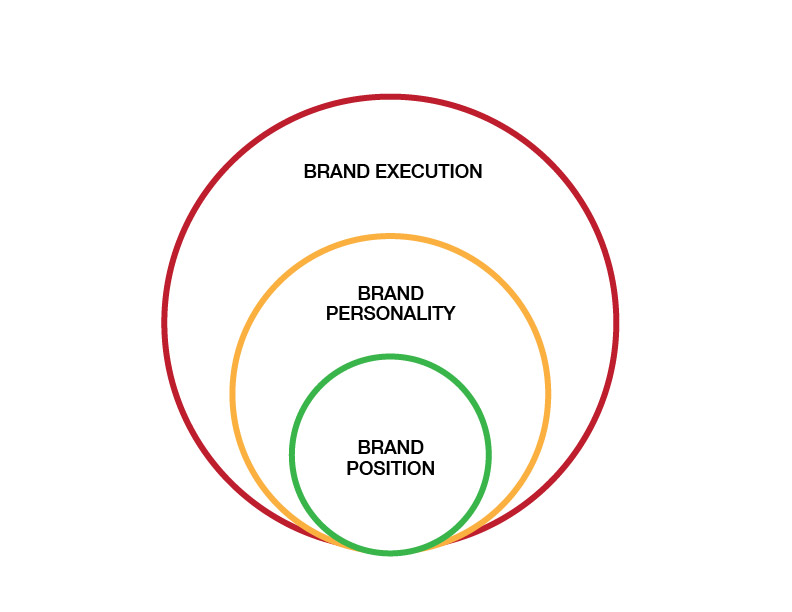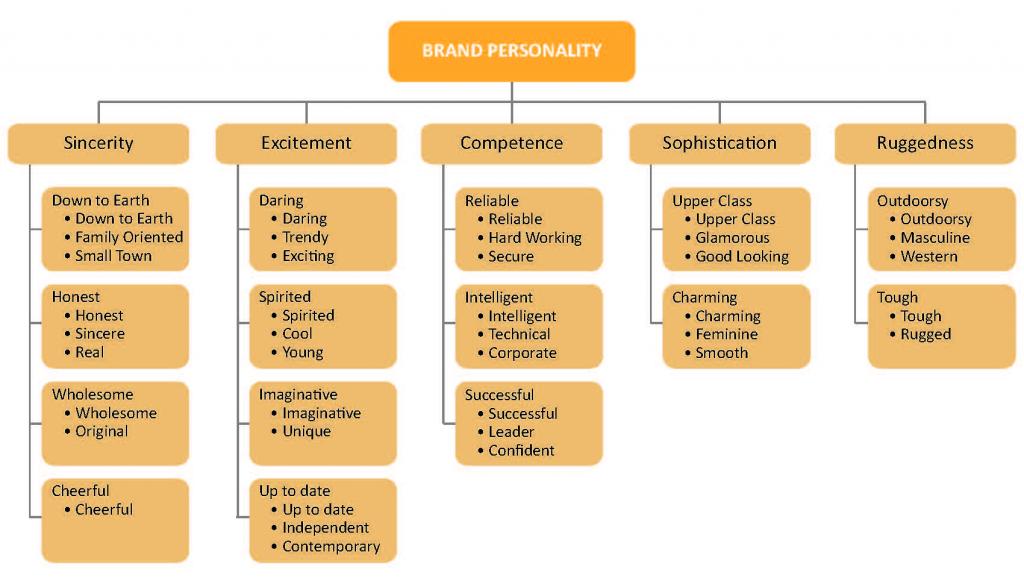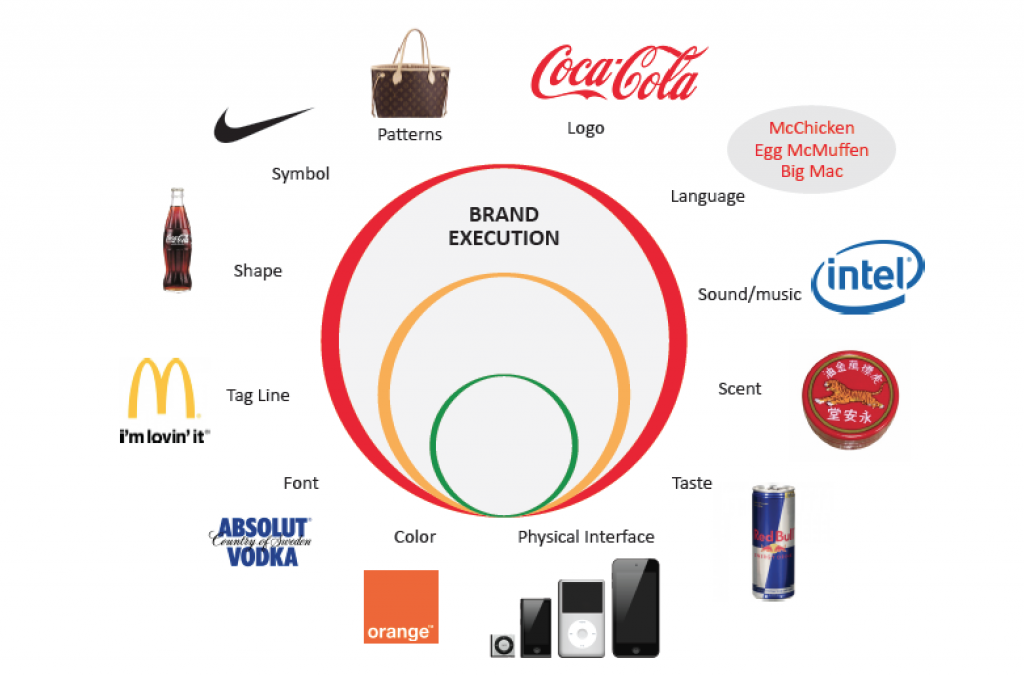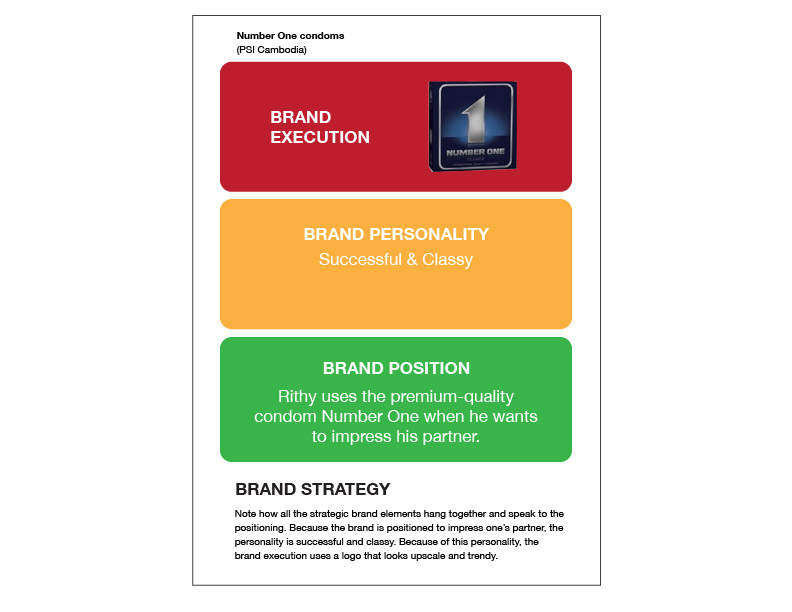Introduction
What Is a Brand and Why is Branding Used in SBCC?
Branding is a marketing technique that has been successfully used in the commercial sector for years to sell products and services. The brand is the idea or promise made to the consumer to distinguish the product or service from its competition. It is expressed in names, terms, logos, symbols or designs.[1] Brands help to define quality, build awareness and recognition, and help the consumer form long-term relationships with products and services. Some of the most globally successful commercial companies – like Coca-Cola® and Apple® – have the most recognized and respected brands.
Branding also can be used successfully in social and behavior change communication (SBCC) programs to help intended audiences adopt and maintain desired behaviors. Behaviors, such as exclusive breastfeeding, taking public transportation or adopting a family planning method, can all be branded to make the behaviors more appealing to audiences. SBCC programs can be branded, as can public sector health services.
What are the Components of a Brand?
A brand strategy is created to develop a brand. The brand strategy is comprised of three main components: the brand positioning, the brand personality and the brand execution. Brand positioning was discussed in Part 2 of this guide. Part 1 covered using audience insight to inform a brand. This guide will address brand personality and brand execution.

What is Brand Personality?
The brand personality is a description of the brand, expressed in two to four adjectives, as if it were a person, such as friendly, bold, smart or confident. Using the exclusive breastfeeding example from Parts 1 and 2 of the guide, the brand personality of this behavior might be nurturing, caring and informed.
Why Develop a Brand Personality?
The personality is used to shape the tone and voice for all brand communication, including advertisements, packaging and the brand name. The brand personality helps to guide decisions around design elements, such as colors and images. The personality also is used internally, along with the brand positioning, to inform how the brand is presented. It can influence the types of words used and even the content of communication materials.
What is Brand Execution?
Brand execution is the material components of a brand – logos, colors, fonts, the ‘look and feel’ – that differentiate a brand in the mind of the audience. Execution is designed to take the product, service or behavior, and create a desired image and perception around it. The executional elements should complement the brand positioning and personality. Developing the executional elements is the last step in developing a brand strategy.
Why is Brand Execution Important?
Without brand execution, the audience would not be aware of the brand, remember it or be able to relate to it.
Who Should Develop the Brand Personality and Execution?
The program team typically develops the brand personality, and can include marketing and communication advisors, key stakeholders and representatives from the priority audience. This team typically develops guidelines for the execution, but an external creative agency or an in-house graphic artist and/or design team should develop the final graphical elements.
When Should the Brand Personality and Execution Be Developed?
Develop the brand personality and brand execution after developing the brand positioning.
[1] P. Kotler, N. Lee. Social Marketing: Influencing Behaviors for Good. Sage Publications, Los Angeles, CA, 2008.
Learning Objectives
After completing the activities in this guide, the project team will be able to:
- Develop a personality for the brand
- Summarize design and logo ideas for a brand
Estimated Time Needed
Developing the brand personality and initial execution should take up to one day. Finalizing the execution can take anywhere from a few days to several months, depending on the program’s and gatekeepers’ availability to review materials and ideas and the
Prerequisites
Steps
Step 1: Develop a Brand Personality
Referring to the brand positioning and audience insight, develop a personality for the brand. Start by brainstorming to find a one-word answer for each of the bullets below:
If the brand suddenly came alive and walked into the room:
- What type of person would s/he be?
- What would s/he say and do?
- How would s/he say and/or do it?
From this discussion, choose two to four adjectives that would best summarize the brand. Record these on the Brand Strategy Worksheet (see Template 1: Brand Strategy Worksheet).
Below is a sample list of adjectives that can be used to describe a brand personality. This list is just an example. There are likely many other appropriate adjectives for the brand being developed. Make sure the chosen words are well understood in the program’s context.

Ensure that the brand personality:
- Is described with a short phrase (no more than two to four words, if possible).
- Uses a description that can be understood by a wide audience.
- Is relevant to the consumer because it is based on consumer insight.
- Is honest – does not represent something the brand could never be, such as HIV testing services can be ‘confident,’ but probably not ‘exciting.’
- Is not something that competitors can easily claim. Remember that the brand is unique in the category.
- Is always informed by the positioning.
Note that the personality is describing the brand, not the intended audience that the program wants to use the brand. For the behavior of exclusive breastfeeding for six months, the results of this process might look like this:
| Exclusive Breastfeeding | |
|---|---|
| Positioning | Personality Analysis |
| For Sarah, exclusively breastfeeding her baby for six months is the only free infant feeding option that provides the best nutrition and allows her to bond with her baby every time she feeds him. | What type of person would s/he (the brand) be? A conscientious, nurturing person who is happy to help othersWhat would s/he do/say? She volunteers in the community and puts her baby’s needs firstHow would s/he say and do it? With quiet determination and dedication |
| Personality in two to four words: nurturing, stable, natural and wise |
Refer to the brand personality and positioning samples in the Samples section for examples from well-known commercial brands.
Step 2: Choose the Brand’s Executional Elements
Choose two to five executional elements from the following list that will help create the brand execution for the priority audience. There is no exact science to selecting the executional elements, but rather an art to choosing those elements that will make your brand unique in its category. No other brand should be linked to the elements chosen. Using the exclusive breastfeeding example, if formula feeding is linked to a certain color in its ads, avoid that executional element. Logos, shapes and fonts are fairly typical elements to choose, but others, such as patterns or sounds, can be unique selections that may truly differentiate your brand in the mind of the audience. Always ask the question, “Will this make the audience recognize my brand?”
- Patterns
- Logo
- Language
- Sound/music
- Scent
- Taste
- Color
- Font
- Shape
- Symbol
The chosen elements should complement the positioning, personality and any other strategic decisions that have been made. They should also match the needs of the priority audience and be likely to hold a place in the audience’s mind. For example, if music is one of the executional elements, it is important to consider which type of music, such as a jingle or song, and which genre of music, such as salsa or rock, will best represent the brand.
The choice of what elements to use is guided more by art and less by science, and should ideally be led by a creative team. Record the final decisions in the Execution section of the Brand Strategy Worksheet (see Template 1: Brand Strategy Worksheet).
Step 3: Consider Executional Elements for Branded Services
If the brand is a service, make sure that the staff and the features of the physical space complement the brand positioning and personality. For example, if a health clinic promises youth-friendly services, consider replacing graphic sexually transmitted infection posters with posters of youth engaging in healthy behavior. Also, ensure that the staff is trained to be friendly and welcoming to youth.
| Some of the most successful brands are immediately recognized by just their executional elements, which are consistent through all communication, store design, the types of staff they hire and other elements. The image below shows how some well-known organizations use various elements to execute their brands. Most people will recognize the brand and know immediately what it stands for just by seeing the logos or interacting with other executional elements. |

Step 4: Create the Executional Elements
Contract a creative team or advertising agency, or engage an in-house design team to develop all of the chosen executional elements. To be taken seriously, the executional elements must look professionally done and be presented consistently across platforms and media.
Programs should pretest executional elements before finalizing them.
Step 5: Create a Brand Style Guide
Have the same team that creates the executional elements create a brand style guide (See the Samples section for examples of brand style guides) to help ensure the consistent application of all of the elements throughout all communication outputs. Everyone who creates communication materials for the brand should use the brand style guide as a reference document.
At a minimum, a brand style guide should have the following components:
- The positioning statement for the product, service or behavior
- Restatement of the brand personality
- Guidelines for the use of imagery and photography in any communication materials
- Guidelines for use of any logo in full color and in black and white if relevant
- Examples of incorrect logo use
- Description of the brand’s color palette to be used in all communication materials
- Description of all acceptable fonts and typography and how they can be used in materials
- Any other guidelines for graphical elements as needed, including stationery design, presentation guidelines and outdoor media specifications (billboards, posters)
- Online media and web page guidelines
- Trademark and logo protection guidelines
- Donor branding requirements, such as where and how to use the donor logo, if required by the donor
Step 6: Finalize the Brand Strategy
Summarize the three elements of the brand strategy (positioning, personality and execution) on the brand strategy worksheet (see Template 1: Brand Strategy Worksheet). The brand strategy will be used by the program team to develop a brand that will set apart the promoted behavior, product or service in the audience’s mind.
An example of a final brand strategy summary might look like this:

Step 7: Monitor the Brand
Developing a brand strategy is just one part of managing the brand. Throughout program implementation, monitor how the audience perceives the brand.
At the local level, listen to what people are saying about the brand, and notice how people react when they hear the brand name or encounter the brand in another way, such as sight or smell.
Include brand-related questions in routine monitoring tools, as well as program evaluation. Some search engines, such as Google and Yahoo, have analytics software that can notify programs whenever the brand name appears on the Internet in a news story, blog or video. (An online search can identify these and numerous other tools for online brand monitoring.)
Use brand monitoring data to improve how the brand is marketed and to react to brand-related issues as needed. For example, if monitoring of Internet blogs written by mothers shows a trend that exclusive breastfeeding is consistently linked to terms like, ‘hard work,’ ‘don’t have time’ or ‘could not keep up with it,’ the brand strategy must be revisited. If women believe exclusive breastfeeding is too much work, the brand must better address this issue and determine ways to show that it can be managed (working mom testimonials on how to make it work), or that the additional time spent is worth it (doctors pushing the benefits of exclusive breastfeeding). In this way, monitoring data can directly inform improved brand management.
Templates
Samples
Boy Scouts of America Brand Identify Guide
Adobe Corporate Brand Guidlines
Brand Personality and Positioning Samples
External Resources
http://www.socialfresh.com/monitoring-your-brand-online-reputation/
http://www.practicalecommerce.com/articles/2803-31-Free-Tools-for-Brand-Monitori…
Tips & Recommendations
- Consistently monitoring the brand and how it is perceived, written about and discussed on social media, such as Facebook, Twitter, Pinterest and other channels, can provide a quick and efficient way to alert program staff when a brand is off track and not being perceived according to the brand strategy.
Lessons Learned
- Seeing the brand as a living thing can help brand managers and program staff better understand the brand personality and the traits it embodies.
- Brand personality drives the tone and voice for all communications about a brand, and is a key component to how consumers will think and feel about a brand.
- Do not underestimate the importance of the executional elements of a brand. While this is a combination of art and science, helping the audience associate your brand with a musical jingle or a certain shape can go a long way to differentiating your brand in a sea of other options.
Glossary & Concepts
Audience insight is the identification and refinement of audience perceptions, motivations and needs relevant to a behavior, product or service. Often, the audience is not even aware of these perceptions, motivations and needs.
A brand is a name, term, sign, symbol or design (or a combination of these) that identifies the maker or seller of a product or service, the line of products or services, or the SBCC campaign. The brand tells the audience what they can expect from the product, service, or behavior. It also distinguishes the product, service or behavior from its competition.
Brand execution is the distinctive physical characteristics and traits of a brand, such as its logo, colors or symbols.
Executional elements are the tangible elements that represent the brand. These include logo, language, sound/music, scent, taste, color, font, tag line, shape, symbol and patterns.
The brand personality is the description of the brand expressed in two to four adjectives as if the brand were a person. The brand personality is used to shape the tone and voice for all brand communication, including advertisements, packaging, the brand name and more.
Brand positioning is a way to make an issue, such as breastfeeding, occupy a particular space in the audience’s mind. It is a way to make the issue stand out. It is the way the program wants people to see and feel about the issue. Positioning answers three main questions:
1) What is unique about the brand?
2) What are the most compelling attributes about the brand?
3) How is the brand different from the competition on both an emotional and functional level?
A brand strategy is how, what, where, when and to whom brand messages are communicated and delivered.[1]
A category is the range of options against which the audience will compare the brand.
A jingle is a short song or tune created to remind an audience of a product, service or behavior. A good jingle stays in the audience member’s mind without any effort on his or her part.
A positioning statement is one sentence that captures what the brand stands for in the mind of the audience. The positioning statement is the core of the brand strategy.
Resources and References
Resources
The DELTA Companion: Marketing Made Easy
References
- Evans, D.W., Hastings, G. Eds. Public Health Branding: Applying Marketing for Social Change. London. Oxford University Press, 2008
- Evans, D.W. Ed. Psychology of Branding. New York, NY. Nova Science Publishers, Inc., 2013.
- Gobe, M. Emotional Branding: The New Paradigm for Connecting Brands to People. New York, NY Allworth Press, 2001
- Kotler, P., Lee, N. Social Marketing: Influencing Behaviors For Good. Third Edition. California, Sage Publications, 2008.
- Population Services International. The Delta Companion.
- Population Services International. The Delta Companion. “Audience Insight”
- Population Services International. The Delta Companion. “Building a Better Brand”
- Ritaccio, G. The Needs of a Segment Should Drive Design. Greenbook. The Guide for Buyers of Marketing Research. Online March 2014.
- Schwabel, D. Top 10 Free Tools for Monitoring Your Brand’s Reputation. Mashable. http://mashable.com/2008/12/24/free-brand-monitoring-tools/. December 24, 2008. Accessed 26 January 2015.
- Weinreich, N.K. Hands – on Social Marketing: A Step-by-Step Guide. California. Sage Publications, 1999
Banner Photo: © 2007 Gilbert Awekofua, Courtesy of Photoshare
